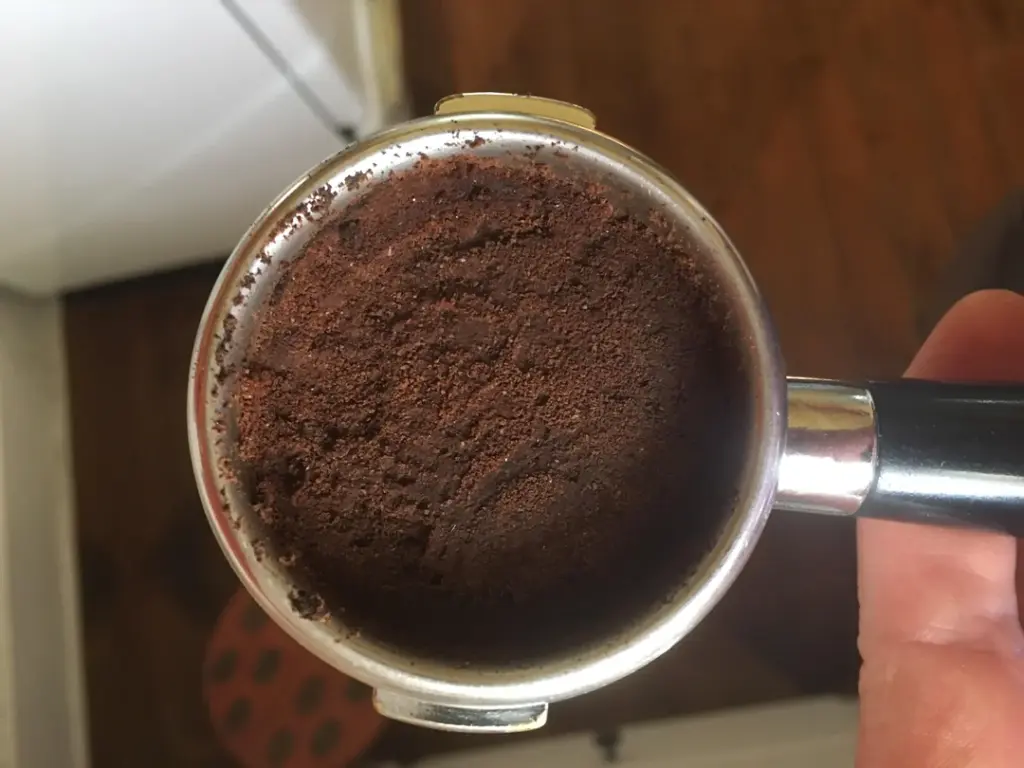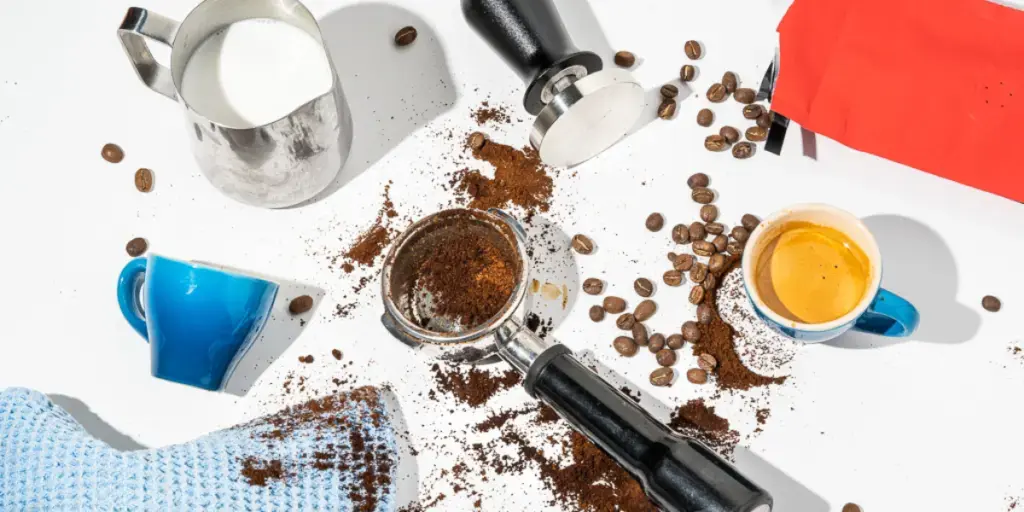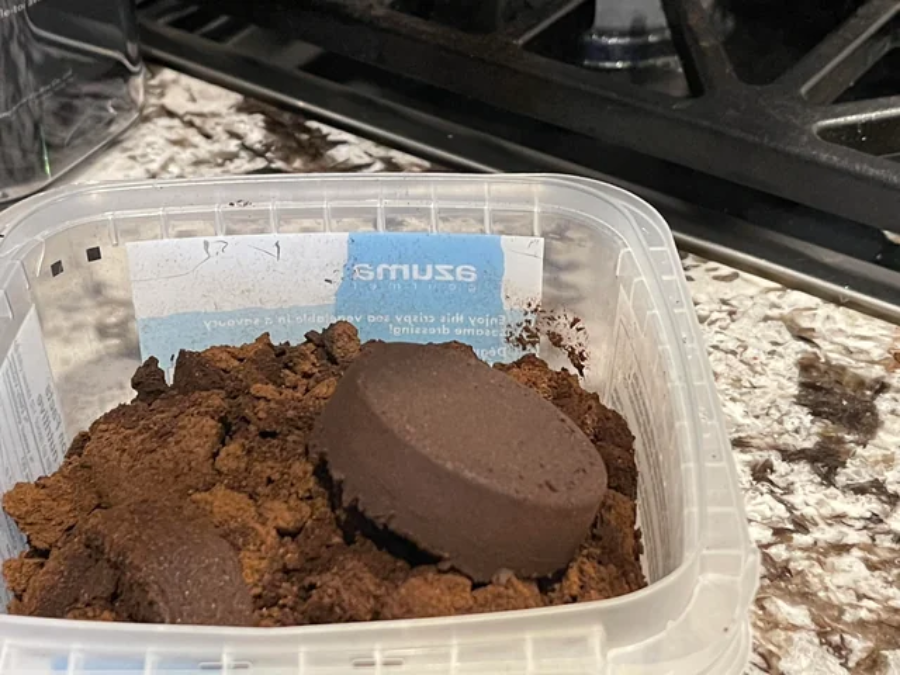How to Use Espresso Puck: Important Things to Know

One of the prevalent coffee refreshments around the world is espresso. For espresso enthusiasts, getting the ideal shot is a combination of art and science, with every little detail—from grind size and tamp to extraction time and pressure—mattering. The state of the remaining puck is one of the most important—yet regularly overlooked—aspects of making espresso.
Brewing an espresso can leave you with an espresso puck cleared out over. An espresso puck can give valuable clues approximately the brewing process, and whether the shot was pulled legitimately. The question is what can we do with these espresso pucks instead of tossing them absent? You might not know that there are numerous ways to utilize your extra espresso pucks. We will explain the features and how to use espresso puck in this article.
What is an Espresso Puck?
When ground coffee is crushed into a filter and exposed to water weight, a byproduct known as an espresso puck is created. A good espresso puck ought to be a dense, equally compressed disc of ground coffee. Pucks can change in shape, texture, and consistency depending on numerous factors, such as grind size, compression technique, and indeed the machine used.
How to Use Espresso Puck to Find the Perfect Espresso Recipe
A good espresso puck can produce a shot of espresso with great flavor. Now, we will learn about the important and unimportant features of an espresso puck. What you need to do is observe the characteristics in espresso puck and find out the recipe for making a great shot of espresso.

Important features
To evaluate the extraction process of an espresso shot, you need to pay attention to the following features of an espresso puck:
Even extraction: Even extraction is essential to achieving a customized flavor in your espresso, as seen by a well-formed espresso puck. A puck that shows signs of a stream (uneven water stream through the capsule) shows that a few parts of the coffee bed may have been over- or under-extracted, coming about in acrid or biting flavors.
Consistency of puck: The condition of the espresso puck can reflect the consistency of your tamping technique. Uneven tamping can lead to uneven pressure dissemination over the puck, expanding the probability of channeling. A consistent puck helps ensure that water flows evenly through the coffee grounds.
Compactness: The grind size of the coffee influences the capacity of water to pass through the puck. A fine grind makes a more tightly packed puck that resists the stream of water, whereas a coarser grind permits water to pass through too easily. The texture of the puck after extraction can give clues as to whether the grind size is suitable for your coffee machine and the particular coffee you are utilizing.
Dryness and texture: Ideally, an espresso puck ought to be dry and hold its shape after being expelled from the filter. A wet, mushy puck usually means that the water was not equally dispersed amid extraction, whereas a crumbly puck can show under-extraction or destitute grind size and dissemination. A dry, tight puck usually indicates a well-extracted shot.
Non-important characteristics
In expansion to the critical characteristics, there are a few non-important characteristics of espresso puck that we can ignore:
Appearance: The appearance of a puck can in some cases give clues to the quality of the extraction, it is not continuously an exact reflection of the quality of the shot. A perfect-looking puck may not ensure a great espresso, whereas a broken puck may still deliver an adjusted shot.
Color: The color of an espresso puck shifts concurring to the roast level of the coffee bean. Darker roasts may result in a dark brown puck, whereas lighter roasts may deliver a lighter brown puck. The color of the puck does not necessarily indicate the cup’s quality.
Puck Size: The size or thickness of the puck can change depending on the amount of coffee utilized and the sort of espresso machine. A few machines permit for more coffee to be brewed, coming about in a thicker puck, but this does not mean that the espresso will taste way better.
Cracking or breaking: Sometimes espresso pucks can crack or break during or after extraction. Whereas numerous believe this is a sign of inappropriate extraction or tamping, breaks in the puck are not always related to flavor. As long as the shot is pulled well and the espresso tastes great.

Factors that Affect the Quality of an Espresso Puck
Getting a good espresso puck depends on many factors:
Grind Size
Grind size plays a major role in puck quality. A finer grind permits for greater resistance, making a compact, dense puck, whereas a coarser grind can make a looser, wetter puck. Finding the right grind size for your machine and beans is pivotal for adjusted extraction.
Dosing
The amount of coffee used in the filter (dosing) affects puck formation. Too high a dose can make the puck too dense, resulting in over-extracted, bitter espresso. Too low a dose can make the puck too loose, resulting in a weak, under-extracted shot.
Tapping
The pressure and consistency of the tapping are important. Tapping too lightly can cause the water to flow through the puck too quickly, resulting in under-extraction. While tapping too strongly can compress the puck too much, resulting in uneven flow and over-extraction. Aim for even and consistent tapping at all times.
Machine Settings
Water pressure, temperature, and the overall design of the espresso machine can all affect the quality of the puck. Different machines may require adjustments to grind size, dose, and tamping to achieve the perfect puck.
Coffee freshness
Freshly roasted coffee tends to release more gas during extraction, which can result in an unstable or loose puck. Conversely, aged coffee can produce a thicker puck but may lack some of the flavors found in fresh beans.
Common Espresso Puck Problems
You need a lot of procedure to get a quality espresso puck. In the brewing process, you may experience a number of issues with your espresso puck. Through there, you can watch and figure out what is off-base with your espresso brewing process.
Soggy pucks
One of the most common issues with espresso pucks is that they get soggy after brewing. This can be a sign of dishonorable dosing or tamping. When you do not utilize the right sum of coffee, the puck may not be tight sufficient, resulting in a wet texture. Similarly, when you do not pack the coffee grounds equitably, the puck may not be eve, permitting water to stream through the puck and make the puck wet.
Uneven extraction
Uneven extraction is another concern with espresso pucks. Uneven extraction is another concern with espresso pucks. Uneven extraction might happen when there is an uneven distribution of coffee grinds in the portafilter, or when the grind size is conflicting. The result is a shot of espresso with uneven flavor.
Channeling
Another issue that might arise when brewing espresso is channeling. This occurs when water finds its way through the coffee puck, causing uneven extraction and resulting in a wet puck. Channeling can be caused by a number of factors, such as uneven tamping, uneven grind size, or dirty group heads.
Wet espresso pucks
A wet espresso puck can be a sign that there is a problem with your extraction. Whereas there may be a few dampness after brewing, a completely extricated espresso puck ought to be relatively firm and hold its shape. A mushy or overly wet espresso puck can be caused by channeling, a conflicting grind size, or uneven tamping.

How to Use Espresso Puck By Reusing
There are numerous imaginative ways to reuse or recycle espresso pucks instead of tossing them absent. Reusing espresso is moreover a way to diminish squander and ensure the environment.
- Espresso pucks can be reused to prepare another cup of espresso.
- Use espresso pucks as a natural exfoliator on your skin. Simply combine espresso grinds with coconut oil and use it as an exfoliator.
- Another technique to use espresso pucks is as a natural odor absorber. Put a few pucks in a little holder and put them in your fridge or closet to assimilate any undesirable odors.
- Espresso pucks can also be used in gardening. If espresso pucks are created using organic coffee, they can be composted. They are tall in nitrogen and are an incredible ingredient to include in compost. You can sprinkle them around the base of your plants to make a natural fertilizer. Furthermore, espresso puck can be utilized to hinder pests. Spread them about your garden to hinder slugs and snails.
- Espresso pucks can too be utilized in recipes such as espresso ice cream or chocolate espresso cake.
Final Words
Espresso pucks are a flexible result of the espresso-brewing process. Utilize espresso puck as a direct to fine-tune your espresso extraction, making wealthy flavors and colors in your formulas, making them more engaging and bold. You can moreover reuse espresso puck for other purposes as we have sketched out over. Knowing how to use espresso puck, you will see that they are a valuable resource that ought to not be squandered.




